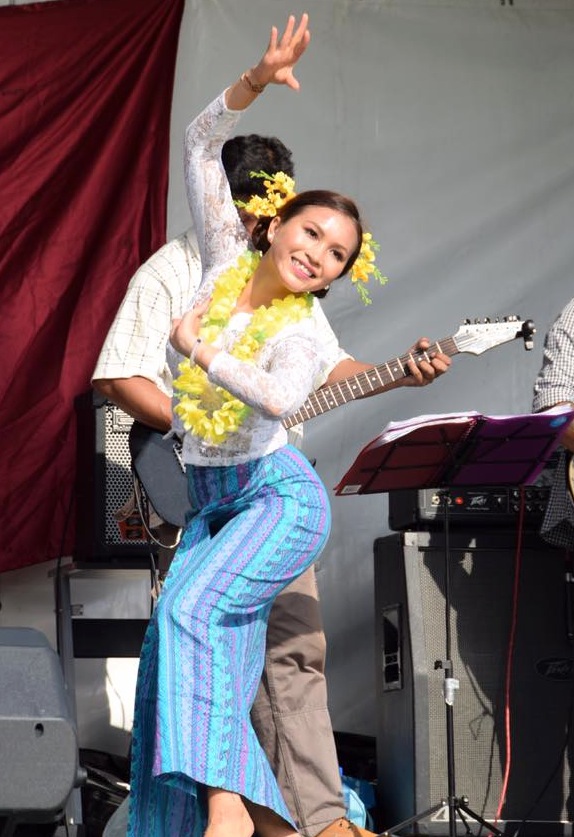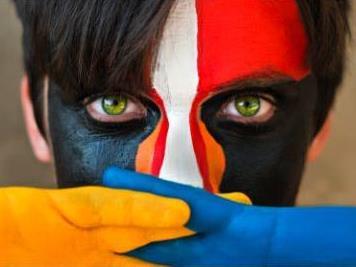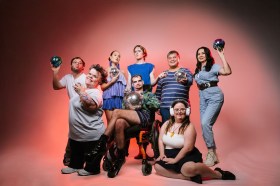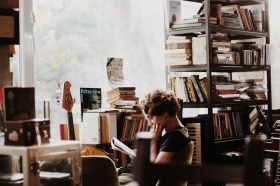Image CC
Australia’s culturally diverse population is illustrated by the huge number of community-driven festivals and events offering opportunities for cultural expression.
But the artists and creatives who are essential to the vitality of these events often slip off the radar of traditional arts funding pathways.
A program to address this provides artists with professional growth opportunities and enhanced sources of creative input.
Government Property NSW has partnered with Arts NSW to deliver an emerging artist development program over a three-year period, directly tapping into more than 20 community cultural festivals that take place at Darling Harbour annually.
The program will assist up to 15 festival artists from culturally and linguistically diverse (CaLD) backgrounds by offering professional development opportunities and a bridge to broader professional arts practice across Sydney.
Kim Spinks, Manager Strategic Initiatives, Arts NSW told ArtsHub: ‘We need to remember that there are significant numbers of people in the living rooms of NSW who were born somewhere else. We don’t always see that reflected in our existing professional arts and culture sector.
‘This program is about widening that sense of who is making arts and culture and shines a light on other kinds of artists and practices that might be able to work within, and enrich, the broader arts sector.’
Busting boundaries to the art world
Practicing and professional artists are not exclusive to art school or conservatorium alumni. There are artists in a lot of different contexts and it is important to recognise those contexts.
‘We realised there was a rich resource in those (festival) communities for artists who wouldn’t necessarily be identified through the conventional arts pathways, and if given a solid platform that enables them to practice more professionally – to be better connected to the sector – then that only enriches the sector as well as their community,’ Spinks said.
Alissar Chidiac is the CACD Creative Producer with Property NSW. She says that community festivals help break down barriers to involvement and the notion that arts and culture are ‘not for me’.
After three decades of working as a community arts and cultural development worker within government arts funding, she recognises the need for a layered approach to arts funding.
‘We know what funding is like in Australia – it is highly competitive to get residencies. Most of these artists have never applied for arts funding before,’ said Chidiac.
In the first round the program supported a Burmese dancer, a Brazilian dancer and a group of young musicians training in Andean music, which crosses a number of countries in South America.

Sanda Htwe, Burmese dance participated in the 2015 program; supplied
These are people who are practicing artists but still in the realm of what is not seen as professional.
Chidiac added that on completing the program one young participant commented, ‘I can now see what is the difference between professional and non-professional’, and another, ‘I changed the way I look at dance’.
‘That is a lived experience, that growth in confidence,’ she continued.
There are a lot of intangibles that are part of professional development that fall outside the kind of reporting and box ticking the sector embraces.
‘Culture is not a blueprint to work off,’ she added.
New pathways for the culturally diverse
Property NSW has been running a program for the past three years to help community festivals with branding and promotion.
But Spinks was clear that the Community Cultural Festivals Emerging Artist Program, which started last year, is about developing artists not funding festivals.
The program offers three levels of support. The artists are offered a modest fee to support them through a training period; a mentor or trainer is paid to work one-on-one with them; and artists are encouraged to produce new festivals works with production costs supported by the Darling Harbour Festivals program.
‘My job is to open up people’s vision and transform the way they see themselves and their practice,’ said Chidiac. ‘It comes out of listening and then trying to open doors, to find trainers and mentors and to recognize what is realistic.’
Spinks said that these cultural festivals often bring out big names as headliners and give a platform to local artists but that they tend to think of them first as community events rather than opportunities for professional practice.
‘There are artists who might be established somewhere else but are in the emerging years of their practice here, only recently arrived. This is a great resource to target and encourage them and to offer another pathway for those artists who might want to do more,’ said Spinks.
The Community Cultural Festivals Emerging Artist Program is soon to enter into its second round of Expressions of Interest. It is open to all festival artists from culturally and linguistically diverse communities.
For more information, visit Culture Beats or contact Government Property NSW event team at gigs@shfa.nsw.gov.au.





